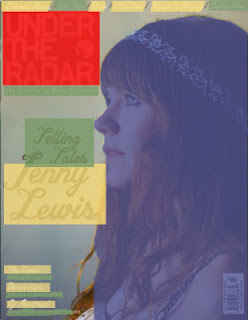SURVEY 1
To ensure I know what it is that my target audience desire in a magazine, I produced two surveys on 'Survey Monkey' with carefully chosen questions which would get the necessary information from them to allow my magazine to be produced in correct knowledge of their interests. This will allow my magazine to appeal and attract the correct audience, narrowing down specific needs so I can pinpoint the lifestyle they lead and tailor to the needs. In consideration of the answers I receive on my surveys, I will ensure my product is appealing to them, and I will hopefully know exactly what they want from a magazine. I believe that my target audience will be interested in stories that introduce new bands and provide the necessary information they need in order to satisfy them with knowledge of artists. Each and every aspect of the magazine must be attractive in order to appeal to my target audience, but the are a few in particular that I will ensure are perfect in representing the audience, such as photographs and relevant information to the individuals that will interest them, therefore attracting them into purchasing the product.

As I have mentioned in previous posts, the particular age range of which I have so far been targeting this product towards, is around 17-24. The answers to the age question show me that it will be relatively easy to reach out to the audience I have found myself targeting, though I might need to drop the age boundaries slightly. The majority of people who took my survey were 13-17, suggesting that I should in fact lower the age, perhaps to 15/16, but still go up to 24, as 18-24 is the second highest.
The majority of people who took my survey were females, the audience I wish to target my product towards. These results have lead me towards thinking that I should use a female model of which I will not sexualise on the cover. I would like the secondary target audience to be males, as it would widen my audience quite far, exactly what I would need.
In consideration of this, I will primarily aim my survey towards heterosexual females, though I did want to have a secondary audience of homosexual males, though this secondary audience would be niche, which would not be a problem. Though it does mean that there would not be a very big secondary audience, and consequently, I could potentially be losing money, as I could be aiming at completely different people as my secondary target audience.
When I wrote this question, I was not very optimistic that the people answering the survey would actually read magazines. Though the audience proved me wrong, and the majority read magazines. This way, I feel as though it would be slightly easier to be able to attract an audience, as they would be looking for magazines already, rather than my magazine have to be absolutely amazing for them to want to purchase it.
Not a great deal of people read magazines often, though I feel as though I have the potential to change this with my product, as it will be professional and I will ensure it looks too good to leave on the shelf. The audience will feel ablated to pick it up.
The majority read music magazines, again taking the pressure off slightly if my magazine were to be published, even if there is a lot of competition.
The most dominant genre of which the people who took my survey listen to, is indie music. This reassures me that I am surveying the correct type of audience. The second is rock, which is closely related to indie music, so I am also able to learn from this as well.
In relation to Stuart Hall's theory that the common mood in teenagers is depression, I feel as though this response holds the implication that indie music reassures the person that they are not the only one who is feeling pain or depression. My star vehicle will also imply that she was depressed, but able to overcome the problem, reassuring the audience and persuading them to purchase the magazine so they know how to overcome depression, even if this is not in the article.
This response clearly shows that some people are quite aggressive when it comes down to mainstream music. I have personally witnessed many occurrences when people of indie culture have gotten furious about how unoriginal mainstream music is.
This shows that there are a lot of indie people in the world who are creative, and so the stereotype that they are into the arts is correct in most cases. I will use this to attract my target audience, and incorporate features of which will appeal to musicians.
 After watching this insightful video, I have made a decision to use the Rembrandt light technique. I have mentioned in previous posts that I intend to select features of which are simplistic, as I know that this will be effective in attracting my target audience, and it is the same in this case. This lighting is simplistic but exceptionally effective. I want to have different lighting on either side of the face to create a better sense of dimension, rather than the chance of the model looking as though she has a relatively flat face.
After watching this insightful video, I have made a decision to use the Rembrandt light technique. I have mentioned in previous posts that I intend to select features of which are simplistic, as I know that this will be effective in attracting my target audience, and it is the same in this case. This lighting is simplistic but exceptionally effective. I want to have different lighting on either side of the face to create a better sense of dimension, rather than the chance of the model looking as though she has a relatively flat face. 












